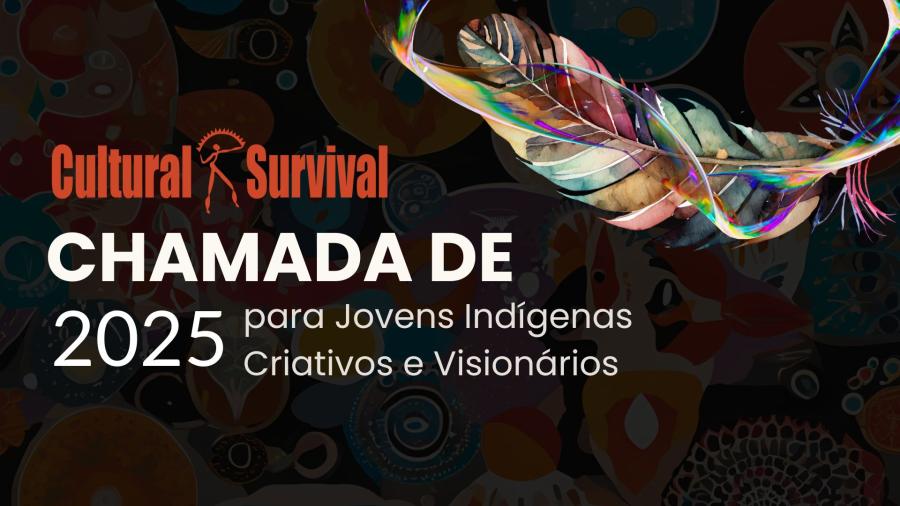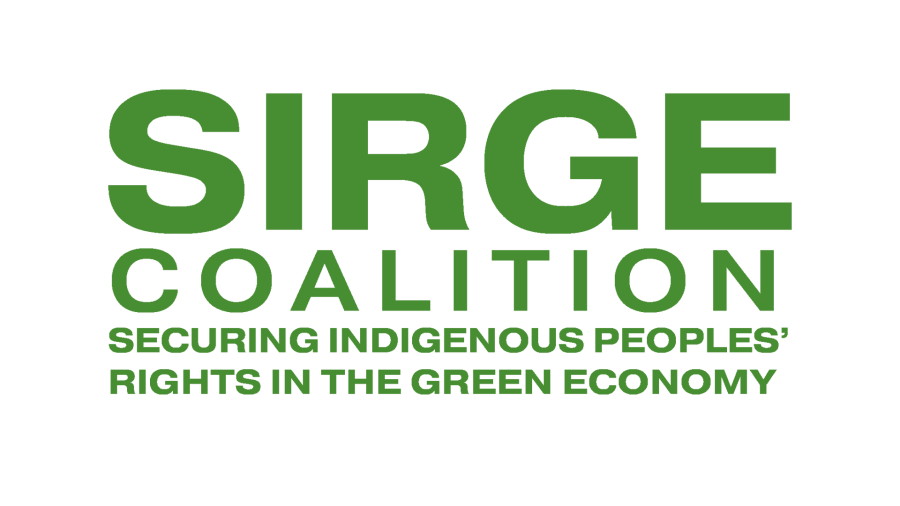This 82-page Survey, comprising some 60 projects, was prepared for the Biodiversity Support Program, a consortium formed by the World Wildlife Fund-US, the Nature Conservancy and the World Resource Institute. It was commissioned early in 1994 by the staff of the BSP's South-East Asia Program after having encountered growing local interest in mapping technologies. The objective of the Survey was to report on a global scale how indigenous and land-based communities are using maps and advanced mapping technologies, both for local purposes and in their transactions with external agencies. Of special interest is the extent to which these local applications are consistent with the goals of the Biodiversity Convention, one of the few agreements to emerge intact from UNCED 1994 (UN Conference on Environment and Development). An overview of the Survey follows.
FROM SAND TO SATELLITE IMAGES
The survey summarizes 60 mapping projects that cover a range of activities from ephemeral maps, drawn in sand, to advanced computer-based image analysis systems. Whatever the level of technical sophistication, locally-gathered traditional knowledge is conserved as the basic source of information.
Several projects included in the Survey distinguished between two kinds of maps: more informal maps, intended for local use, and "technical" maps required for transactions with external agencies. But these differ in form rather than content: for both, the content remains traditional ecological and cultural knowledge and practice.
The power of maps as packets of environmental data has been used to good effect by indigenous peoples in their dealings with external agencies, as they realize the negotiating potential of deploying equivalent or better data bases. Specific expressions have been coined to define this strategy, for example "counter-mapping" or using maps to "defend" traditional territory by re-naming them in vernacular languages.
GEOMATICS FOR LOCA-GLOBAL DATA EXCHANGE
The potential for a second "external" linkage comes when locally-gathered environmental data is "geocoded" by using GPS. Such data can then be exchanged or compared with geocoded data in global or satellite environmental data base. Potentially, this enables local groups to draw upon global data bases for their own purposes and to deliver globally significant local data. However, this technical potential for reciprocal data trade has yet to be realized in a systematic manner.
PEOPLE-LAND EQUATIONS
The population density on the land being mapped varies widely. At one extreme, small and scattered indigenous communities are using geomatics to collectively care for large territories. In the Amazon, 145 Parana are planning the reoccuption of 400,000 ha. of their traditional lands (2750 ha per person). and 470 Mengraknoti Kayapo recently demarcated their 4.4 million ha. territory, almost 10,000 ha. per person. In such cases, geomatics can amplify the traditional capability of land-based people care for an defend their lands; it enables them to monitor the activities of different interest groups on their land.
At the other extreme, geomatics plays a role in Participatory Rural Appraisal (PRA) exercises: ephemeral sketch maps, drawn in the sand, and aerial photography have become techniques for raising awareness and mobilizing local human resources - as a medium for communication between villagers and others. This use of geomatics reveals differences between classes, gender and age groups, and helps to resolve and accommodate these differences through cooperation.
These categories are complementary rather than exclusive: the first-using geomatics to care for large areas of land-is mainly technical and explores ways in which communities can orchestrate this technology to meet their needs; the second-using geomatics and PRA within a community - seeks to harmonize local interest and motivate them towards co-operation in environmental care.
IMPLEMENTATION OF THE BIODIVERSITY CONVENTION.
At an Intergorvernment Meeting of Scientific Experts on Biological Diversity (Mexico 1994), charged with the "identification of innovative, efficient and state-of-the-art technologies (for) the conservation and sustainable use of biological diversity," six technologies were identified as "biogeographical mapping technologies": 1 Habitat, vegetation and gene-variation mapping 2 Regional mapping technologies 3 Remote sensing for spatial heterogeneity and complexity 4 Geographic information systems 5 Aerial survey, patrol and photography 6 Traditional knowledge of territories and habitats.
With the exception of gene-variation mapping, the projects described in the Survey utilize all these technologies in various ways, To that extent they could qualify as virtual implementation of the Biodiversity Convention. They also serve as valuable indicators of the kinds of biodiversity mapping and monitoring that can be accomplished when these technologies are applied in a community context.
PROGRESSIVE APPLICATIONS
In terms of their objectives, the mapping projects fall loosely into the six categories summarized below. The first five of these seem to fall into a natural progression whereby one situation and its methodological counterpart precipitate the next. This theme is evident throughout the Americas, although less emphatic elsewhere.
Throughout this progression, the traditional knowledge essential to the first stage is gradually expanded and consolidated, through to different applications. 1 To gain recognition of land rights. Indigenous peoples have repeatedly made it clear that they cannot assume the responsibility for their traditional lands until their rights and ownership are reorganized and legally defensible. In many cases, the vehicle for negotiating this recognition has been the Land Use and Occupancy Study, a methodology which seems to have been pioneered by Inuit in Canada in the early 1970's and since then has been implemented in many variations throughout the Americas.
Advances in indigenous use of this technology include a gradually reduced dependence upon external expertise. Wildlife and environmental management regimes, which used to emerge after a settlement had been reached, are now often embedded into the negotiating package. In British Columbia, where land claims negotiations with First Nations are only now getting off to a start, the land use and occupancy data is being integrated with GIS, GPS is used to "geocode" accounts by elders of traditional practices and places. While land occupancy studies have exploited the entire range of mapping and geomatics, there is still a need for large-scale high resolution photography for detecting traditional sites. 2 To demarcate traditional territories Land claim settlements may confirm boundaries on paper without providing for their demarcation on the ground. This later can be a costly proposition and provides tempting excuses for management agencies to procrastinate. But GPS promises to be cheaper and faster than conventional compass and theodolite methods, and operational skills can readily be acquired. More can be done with GPS once the operational routines for working under a forest canopy have been elucidated.
Some authorities seem prepared to accept boundaries marked by GPS but others demand the installation of impractical elements, such as boundary markers of specified dimensions. The largest part of the $600,000bill for the Mengraknoti demarcation was for helicopters to transport cement to mark the boundaries. Ye'kuana demarcational has taken the opposite tack; first it will be completed on the ground by community teams, then this line will be geocoded and placed on a technical map, for government negotiations.
Demarcation methods need to be evaluated as they evolve, and information on planning and execution needs to be shared. It is difficult to compare costs of various methodologies without comparative information about the length, visibility and terrain types traversed by the boundary line; rivers make for fast work, for example, while forested mountains slow it down. Systematic information on these factors would enable us to compare various methods more realistically as well as to estimate the logistics of individuals demarcation projects more accurately. 3 Protecting demarcated lands. Demarcation does not assure protection unless supported by some form of subsequent boundary monitoring. The projects do not contain any systematic examples of boundary monitoring; satellite imagery has been considered for the Amazon but there are drawbacks; in terms of low resolution, expense and problems with cloud cover. A group in Sao Paulo is proposing to use ultralight aircraft for video patrolling,. Video cameras coupled to GPS promise an alternatives to satellite imagery. This is an area which called for field exploration. 4 Gathering and guarding traditional knowledge. The combination of GPS with cassette and video recorders has enabled local researchers to visit special sites in the company of elders and to generate a geocoded data base of traditional knowledge. Some groups, for example the Suhuswap Nation Tribal Council, are storing this data in a GIS and protecting in with controlled-access software. 5 Managing traditional lands and resource. In addition to the straightforward management of forest, fish and wildlife populations, "management" includes projects to restore degraded lands and to assess and monitor the environmental impacts of industrial development projects. Tribal resource groups such as the Yakimas and Navajo are using GIS as an integrated data base for reservation and neighboring lands. The Zuni Nation uses GIS for the Zuni Conservation Project, to restore their lands and traditional agricultural practices. High resolution geocoded aerial photography can monitor progress in forest recuperation in fine detail.
By combining the resources of 23 Cree communities, Manitoba Keewatinowi Okimakanak has developed a GIS data base which covers a third of the province of traditional practice and wildlife movements can readily be recalled, and this system has proved effective in responding to proposal for industrial resource development. 6 Mobilizing community awareness and resolving conflicts. Most of the cases described in the guide derive from attempts by indigenous peoples to regain control of their traditional territories. However, there is another areas of activity, known as PRA (Participatory Rural Appraisal) or RRA (Rapid Rural Appraisal) which uses maps differently.
PRA is comprised of a complex of methodologies used by external groups in stimulating communities to reflect upon their situation, openly discuss interactions between their environment and local institutions, and collectively assume responsibilities, for allocating and managing local lands. In this context, maps are used to animate discussions, to show the dispositions of lands between families and clans, and to illustrate the interaction between environmental variables and local land use decisions.
These maps reveal as much about people's minds and attitudes as about their lands. In Bangladesh, Anil Gupta has pursued what he calls "reality mapping" by providing pens and paper to villagers, asking them to map the features they felt were important to their survival. The maps varied between women and man and between rich and poor; for example, the poor drew only their neighbors, the rich the whole community.
Ecological mapping based upon farmers' comments illustrates biological interactions as well as the influence of caste and gender upon agricultural decisions. Gupta also found that it illuminated the connections between risk, poverty and environment. Conventional maps are assumed to be objective. These maps are supposed to be subjective, expressing the things felt to be essential. They are message maps.
PRA has also revealed how maps and three-dimensional models can be instrumental in addressing local land use conflicts. They help to level the playing field by exposing issues to general comment and measurement.
Article copyright Cultural Survival, Inc.



